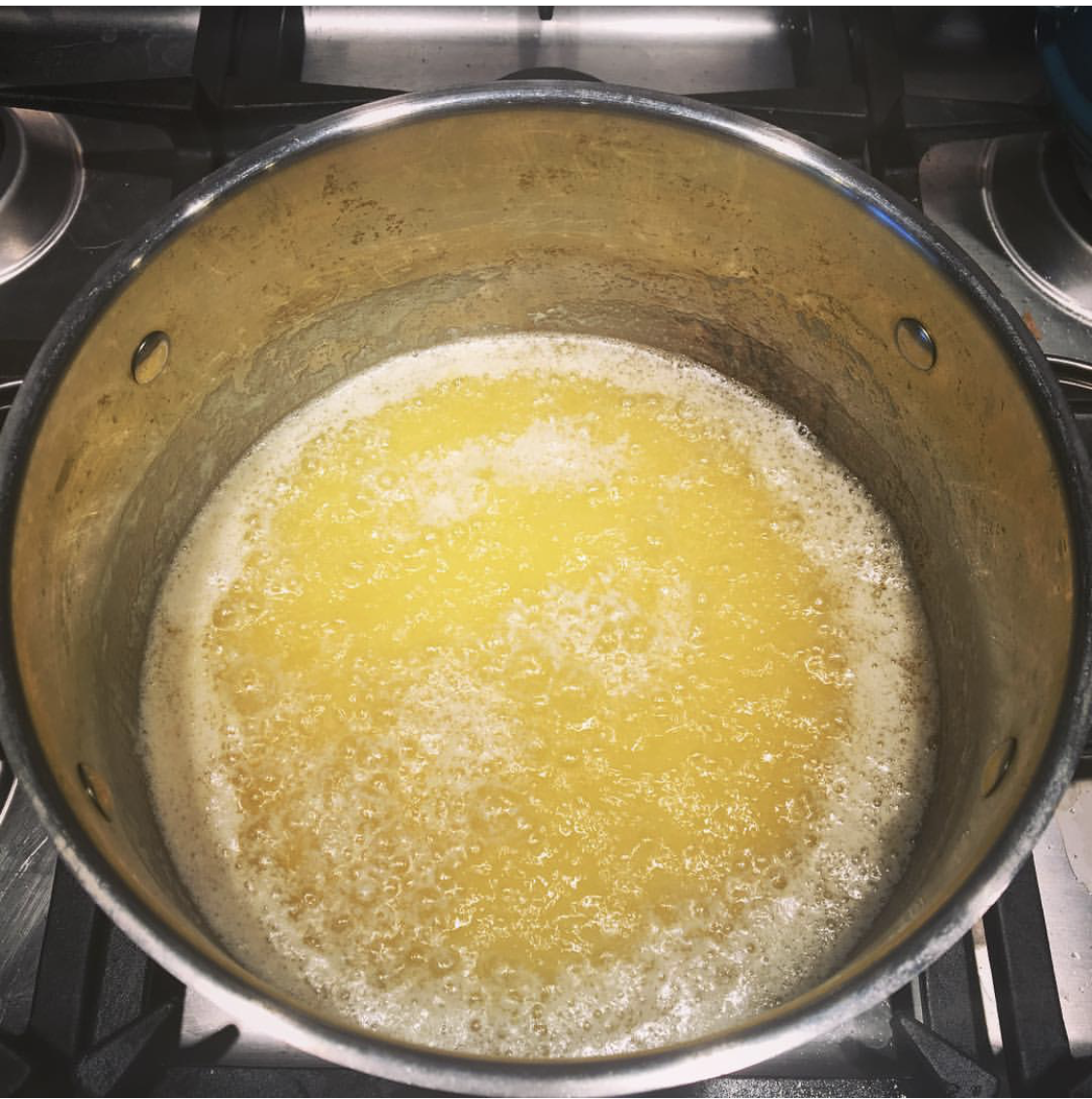
Ayurveda's Love Affair with Ghee
“She’s a rare breed. Youngest of 13 siblings. Never had a cavity. Drove a car until she was 97 years old. Attributes it all to whole milk, her pickles, and Jesus.”
My friend, Max, texted me this the other day about his 103-year-old grandmother. I chuckled to myself, picturing this scenario. I couldn’t help but think of Ayurveda, India’s 5,000-year-old traditional medicine which would support Max’s grandmother’s claim that whole milk, in all its forms can, in fact, keep humans healthy.
What is Ghee?
Let us begin by looking at the many forms of milk. Milk can be consumed as the liquid itself or it can be churned to make butter, one of our favorite kitchen ingredients. Butter can be further reduced to its purest form of oil. You do this by slowly cooking butter until the milk fat solids begin to reduce, caramelize and separate from the oil. Sugar and water also reduce and separate through this process. What you are left with once the milk fat, sugar and water reduce is what Ayurveda calls clarified butter or ghee. This highly revered oil is an extremely healthy alternative to butter, with a high smoke point, making it ideal to cook with. You can use it in place of butter on your bread, when sautéing and while baking.
Ghee Benefits for Skin
Ghee is not only useful in the kitchen, it is also wonderful for the health and vitality of your skin. It has been used for centuries in India due to its deeply moisturizing effects and is known to brighten the complexion, reduce dark circles under the eyes and hydrate even the driest of skin. If you have not tried ghee topically, now is the time to try! You can use ghee to oil the body and perform an abhyanga. Abhyanga is an excellent way to maintain the moisture and suppleness of your skin, especially during the dry, cold months of fall and winter, also known as vata season.
In India, there is another term for applying oil to the skin, it is called snehana. Snehana has a couple translations, one being ‘to anoint oneself with oil’ and another translation is ‘to love oneself’. To oil the body is one of the ultimate forms of self-love and self-care. When we oil ourselves, or perform abhyanga, we are connecting with our sense of touch and our physical bodies. It is a sacred ritual that can help us cultivate confidence, respect and nourishment for ourselves. When we have self-love and a strong connection with ourselves, we can then impart these qualities out into our daily interactions with the world.
Ghee in Ayurveda
As you can see, ghee is revered as one of the most precious oils in Ayurveda. It is known to help build ojas or physical and mental strength and stability. When we have healthy ojas, we have a strong immune system and the ability to withstand stress. Thus, if the body is feeling weak and depleted or emotional feelings of fragility and sensitivity are coming up, Ayurveda would recommend building ojas through the diet. Some of the main foods that build ojas are raw, whole milk, almonds, dates and of course, ghee.
Ghee is considered sacred in Ayurveda and Hinduism not only because of its various health benefits and medicinal applications, but also due to its origin from cows. In Hinduism, cows are sacred and are symbols of life and a main source of food for many. I would like to point out that when Ayurveda was born over 5,000 years ago, there were no factory farms; all dairy products were raw, unadulterated, and from healthy cows living their lives in nature. It is our duty today in the modern world to choose raw dairy products from companies with ethical practices, where animal well-being is just as or more important than the bottom dollar.
Ayurvedic Practitioner, Katie Silcox eloquently explains in her podcast The Ghee Spot, that cows freely give of themselves to us, providing us with a sacred gift from the universe, ghee, which we should never take advantage of.
So to recap, Ayurveda has a love affair with golden ghee and its many beneficial uses. Organic, fresh, pure ghee can support a healthy, stable body through its ability to hydrate the skin, build ojas and promote even greater self-love. Essentially, ghee can be thought of as pure love gifted to us from the cow. This pure love is passed from the cow into the oil, and in turn this oil gives us the ability to impart greater self-love and self-care onto ourselves. What a beautiful selfless gift!
Western Science & the Health Benefits of Ghee
For those of you that want western scientific evidence on the benefits of ghee, let’s take a moment to dive in even deeper. In the West, the thought of consuming ghee for its health benefits might seem a bit backward because we are programmed to believe that fat makes fat. However, we must have a paradigm shift and understand that healthy fat makes healthy fat, while unhealthy fat makes unhealthy fat. One cannot live without the intake of fats. Healthy fats from ghee, in the form of omega-3’s or 6’s, keep our joints lubricated, skin and hair lustrous, insulate our bodies, provide protection for our internal organs, boosts our ojas (immune system and mental strength), power our brains, lower cholesterol and prevent acute and chronic disease.
Ghee also contains butyric acid, which is known to heal internal wounds, particularly in the gastrointestinal tract. It also strengthens the colon and promotes regular elimination patterns. Some vitamins in ghee include Vitamins A, E, D and K. Vitamin A is essential in keeping eyesight strong, while Vitamin E has powerful antioxidant and hydrating effects, Vitamin D keeps our bones healthy and Vitamin K supports heart health. These vitamins also assist in the proper functioning of the immune system.
I strongly believe that for centuries, people, including my friend Max’s 103-year-old Grandmother, who was raised on a 400-acre organic dairy farm, have truly benefited from the fresh and high-quality dairy sources that were readily available throughout human history. In today’s world, in order to receive the pure love and health benefits from ghee, we must consciously choose the highest quality, organic butter available to us. When looking for butter or ghee sources, remember to always look into the practices of the dairy farm and if you have the opportunity to purchase local butter and make your own ghee, then choose to do that.
Where Do You Buy Ghee?
It is important to confirm that the ghee you are buying is made in harmony with nature and has the best animal welfare practices. This will be the most beneficial for you, the cows and the planet. You can commonly find ghee at your local grocery store; however, as far as brands go, I recommend Pure Indian Foods Cultured Ghee. Pure Indian Foods ensures that they source their butter from farmers that have the best animal welfare standards, the best grass-feeding practices and the Strictest non-GMO standards in the industry.
Make Your Own Ghee
The thought of making my own ghee initially intimidated me a bit at first; yet, it is truly a simple process. After a few times of making it, you will feel like a pro.
You will need:
- 1 glass pint jar
- 1 mesh strainer
- cheesecloth (optional)
- 4 sticks organic unsalted butter
- soup pot
Directions:
- Choose a pasture raised, unsalted, organic butter to make your ghee. The higher quality the butter, the better the ghee.
- It is important to make ghee with mindfulness. Allow other thoughts to subside and your ghee making to become the point of focus. Turn this process into a form of meditation.
- Start with 4 sticks of butter. This makes 1 pint of ghee.
- Place the sticks of butter into a deep pot and place the pot on a burner.
- Set the burner to the lowest setting.
- The butter will begin to melt and you will start to hear a snap, crackle and pop. This is the milk fat solids separating from the clarified butter/oil.
- Stay close to the ghee as the process only takes around 15-25 minutes or less.
- When the ghee becomes silent, it is time to turn off the burner and remove the pan from the heat. You will see brown flecks at the bottom of the pan.
- Allow the ghee to sit and cool for 10 minutes.
- Have a mesh strainer and/or cheesecloth ready to strain the ghee into your glass pint jar. If you do not have cheesecloth handy, a mesh strainer will suffice. If you do have cheesecloth, place it in the mesh strainer before straining the ghee. The strainer and/or cheesecloth will catch the milk fat solids as the ghee fills your pint jar.
- Allow the ghee to sit with the lid off until it is completely cool. Once it has cooled down, fasten the lid. Ghee has a longer shelf-life than butter, so it can be stored in the fridge or kept out next to your olive oil.
Your ghee should be a bright golden color. If it is black, you have cooked it too long. This burnt ghee should be discarded. If your ghee has more of a toasted brown color, it is fine to use; it will have a caramelized flavor that many enjoy. Do not get discouraged if your ghee gets burnt the first few times you make it. You live and you learn, right?
You can even infuse your ghee with some delicious herbs like cardamom, cinnamon and a pinch of nutmeg. To make this herbal-infused ghee, simply follow the directions above to make the ghee. Once finished, add it to your crockpot. Add ½-1 tsp of cardamom, ½-1 tsp cinnamon and a pinch of nutmeg. Cook the ghee on low for 4-6 hours. The low setting of your crock pot should not boil the ghee; instead, it should warm and infuse the ghee and herbs together.
Happy cooking, baking, and oiling thyself with the pure love of ghee!

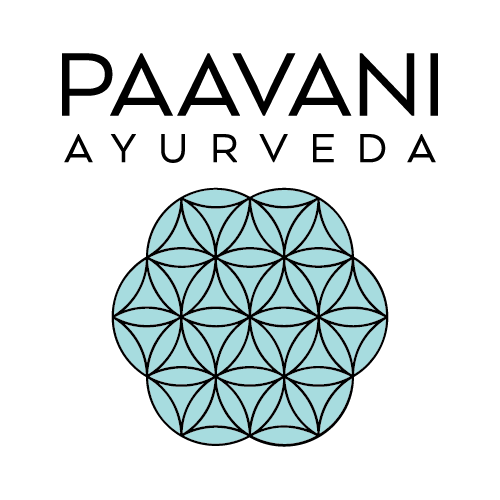
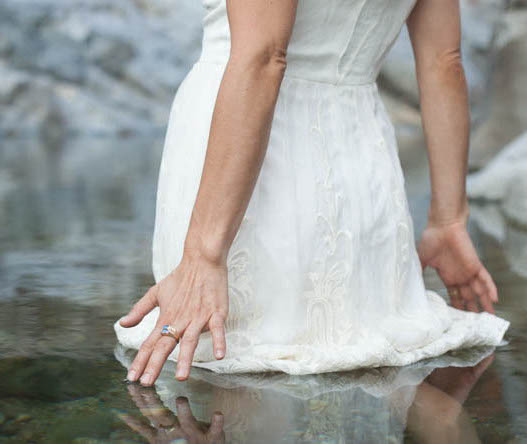
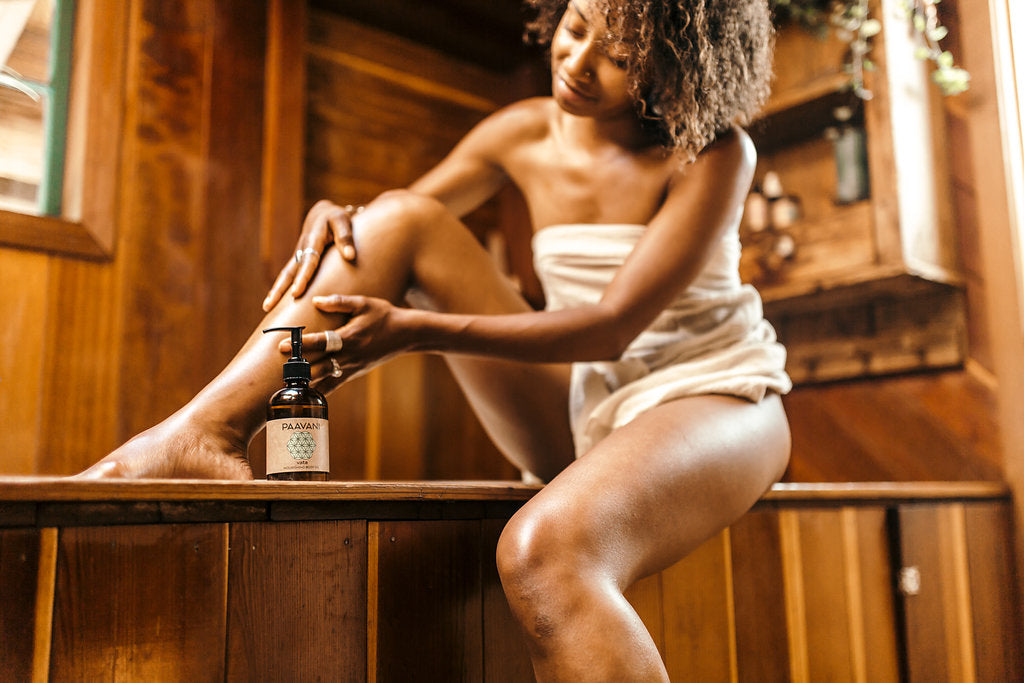
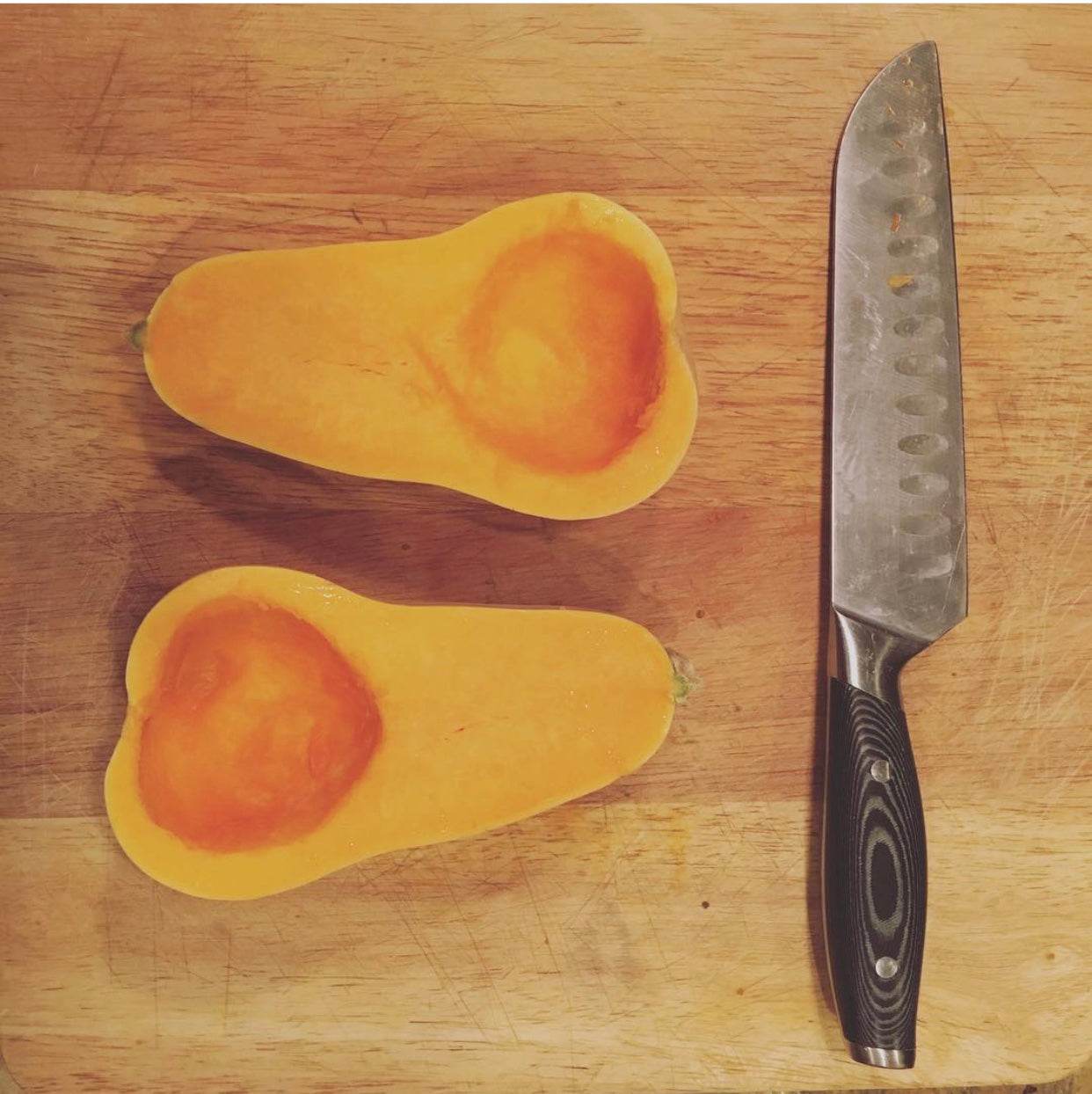
Leave a comment
This site is protected by hCaptcha and the hCaptcha Privacy Policy and Terms of Service apply.